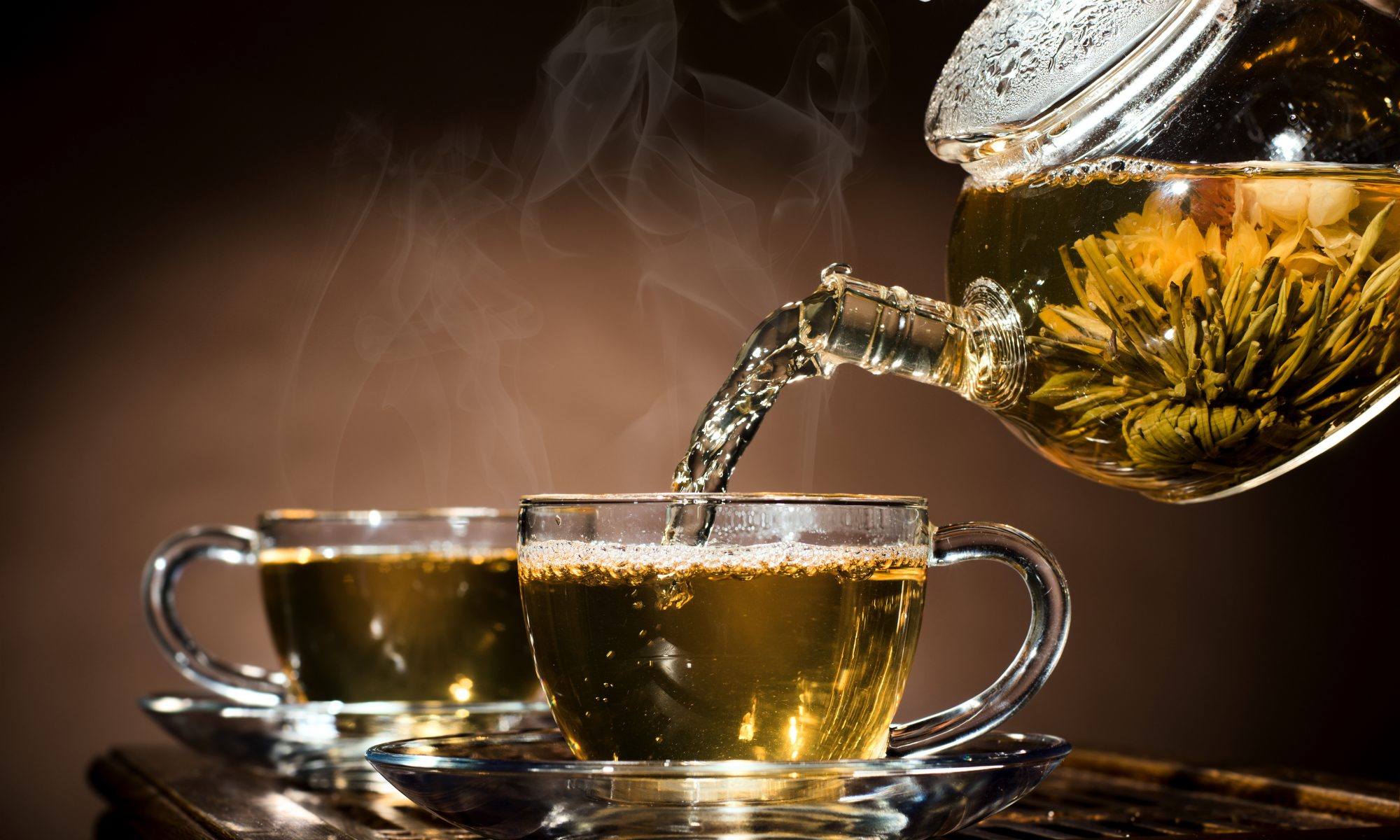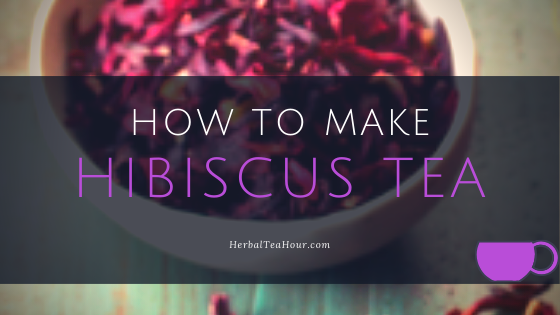HOW TO MAKE HIBISCUS TEA – INTRO
Skip Ahead To:
Is hibiscus tea your favorite kind herbal tea? If it is, then you probably have read dozens of articles about how to make hibiscus tea, how to get the right hibiscus tea product, and much more.
That’s completely normal. The fact that you are reading this article means that you’re still searching for the one article that explains it all. You just struck the goldmine then. Let me explain…
How to Make Hibiscus Tea – Overview

Please note: This post contains affiliate links. An affiliate link means that we may earn advertising/referral fees if you make a purchase through our links.
In this article, we’re going to learn all you ever wanted to know about hibiscus tea – and maybe even a little more! First, we are going to find out some interesting things about hibiscus tea.
Next, we’ll really dive into making hibiscus tea. You’ll learn how to make hibiscus tea through a simple recipe. Don’t worry, I’ll teach you nice and slow. There are no confusing instructions or convoluted listings of ingredients on HTH!
Next, we’ll look at what you should always note when making a purchase of hibiscus tea. Without these features, you might have made a serious blunder in your purchase. But if you remember what you have learned, you’ll be a very knowledgeable consumer and will be able to separate the “best” from the “rest” with ease!

Finally, I’ll shorten your shopping period by suggesting the top hibiscus tea offerings you can choose from. By no means are these the ONLY great hibiscus tea offerings on the market. However, we have thoroughly researched them, experienced them, and feel comfortable introducing them to the HTH readership!
I also include a little bit about my own experiences when making hibiscus tea. I discuss the showcased products, what I feel about them, and even add a short “pro” and “con” list to help you ascertain my opinions with ease!
So if you’re ready like I am, let’s begin!
How to Make Hibiscus Tea – Learning the Basics

Please Note: As an Amazon Associate, I earn from qualifying purchases.
So let’s start from the beginning. You probably know how popular hibiscus tea is. It’s probably in the top five for the most popular types of herbal teas in the world. The popularity has really taken off since the middle of 2018, and continues in growth to this very day!
It’s so popular that it even has its own name in different countries! Think “rose of Sharon” or the “Jamaican flower” – these are simply different ways of referring to the exact same thing!
Hibiscus tea has a unique taste that makes it stand out among other herbal plants. Most hibiscus teas are made from the hibiscus sabdarifffa – a specific kind of hibiscus.
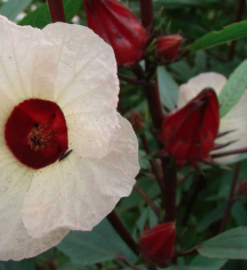
Apart from its amazing taste, hibiscus tea is also known for its great health or general well-being benefits. Claims of weight loss, indigestion, and mitigation of bloating issues are just some of its many alleged benefits! Of course, it tastes pretty darn good too!
While this is true, it’s also good to put these things into perspective. Consumption of this tea (in excess) will cause you problems (you can learn more about hibiscus tea side effects here). A lot of problems. Most people have found that excessive intake led to a drop in their sugar levels. This is why it is very, very important for you to speak with a doctor or medical care provider BEFORE you consume hibiscus tea. Every one of us is different from the next, and its important to seek medical advice on your specific situation. Better safe than sorry!

Hibiscus tea has a very straightforward process when it comes to its preparation. This is great news for us! I don’t know about you, but I like to spend more time enjoying my herbal teas than I do preparing them. Maybe I am just a bit lazy?
Let’s talk about the PERFECT recipe to use for hibiscus tea. We have a few tricks up our sleeves and we keep this nice and easy – the end result will be something you can be pretty proud of, and we suspect your tastebuds will be thanking you for your efforts!
How to Make Hibiscus Tea – A Simple Recipe

Like I have earlier said, preparing hibiscus tea is fairly straightforward. You should remember, though, that certain factors might result in slightly different recipes.
For example, if you are using loose leaves, you might need to do some things differently. If you plan to serve your hibiscus tea cold, then certain steps must also be followed.
Oh, another thing before we start. I’ve divided this section into two parts. We’ll first talk about the ingredients that are needed to create this delightful tea. Then, we will talk about the instructions for the recipe. Easy enough, right?
So let’s begin!
Easy Listing of Ingredients
- Hibiscus tea bags or leaves (the more leaves, the more flavor)
- Water (6-10 cups)
- Sweeteners (optional) (we like to use sustainable sourced honey)
- Lime (optional) (you can also use a lemon or orange depending on your tolerance for a bit of a “sour” taste).
Easy to Follow Instructions
Step One. The first step is to make sure all your ingredients are ready. Teabags don’t require much fuss. If you are using hibiscus leaves, you’ll have to measure them to get the right quantity.
If you are getting the leaves yourself, you will have to cut and sift them. In my opinion, that’s a lot of work. I recommend that you buy the tea instead of going through that stress. Of, and if you do buy them, make sure you buy the kind that has already been dried for you. Trust me – that is a BIG time saver!
Step Two. Put water on your stove and let it reach a rapid boil. Be careful to take precautions when you are working with boiling water – you don’t want to burn yourself!
Reduce the heat and let it simmer. If you are using leaves, you might want to put them in first. Then pour the water over it. The water should just barely cover the leaves (though you’ll want to also calculate how much water you’ll need based upon the number of servings you are trying to yield with your recipe).
Step Three. Let your tea steep. I recommend that you let it steep for 3-10 minutes. The specific time for steeping will be determined by your preferences on the strength of your tea. The longer you steep, the more strong the flavor becomes. However, we don’t think there is much more to be produced, flavor wise, by steeping in excess of 13 minutes or so. There is only so much flavor to be extracted!
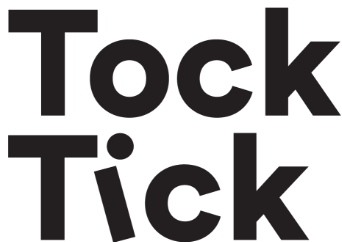
One trick I’ve learned over the years is to cover the pot when steeping. It helps keep the moisture and aroma stuck inside. It’s great for your tea. You’ll notice this once you take the lid off of the pot. The left over aroma that does escape from the concoction will fill your house with a very pleasant hibiscus smell – think of it as a “natural” air freshener!
Step Four
Now you can pour your tea out of the pot you are using. If you are using leaves, then you might have to separate them from your hibiscus tea.
This can easily be done with an infusion or strainer. We always suggest running the tea through the strainer two or three times. This is the only sure way to get all remaining tea leaves separated from the beverage. By the way, you can add the “leftover” hibiscus leaves to your garden compost! Better than just throwing them away and your garden will thank you for it!!
Step Five
Now, add your sweeteners. Like mentioned above, we think that sustainably sourced honey is your best bet for a sweetener here. It is not “too strong” as to overpower the flavor of the hibiscus, nor is it “too weak” requiring you to add way too much to sense any flavor at all!
Your tea is ready! If you plan on serving cold hibiscus tea, you can put in the refrigerator to cool for some hours. Then pour the hibiscus tea into a mug with ice cubes (don’t use too many – 2 or 3 tops, as the melting ice will “water down” the hibiscus flavor). Using lemon or lime should be the finishing touch, but remember, you can use orange slices as well!
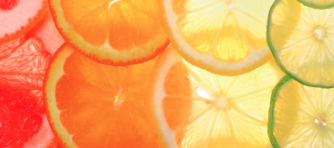
So there’s how to make hibiscus tea! You should try it out as soon as you can buy the hibiscus tea (whether loose leaf or tea bags).
Talking about buying, let’s take a look at some important features to look out for when making a purchase. If your hibiscus offering has each of these crucial features, you will most surely be pleased with the tea that results!
Side Note: If you liked this recipe, you should look into our recipe for the Best Spearmint Tea! We also have a fun article on How to Make Dandelion Root Tea – for those of you who like to brew from scratch (just make sure you work with the Best Dandelion Roots to ensure a good outcome)!
How to Make Hibiscus Tea – Important Features

If you’re learning how to make hibiscus tea, you have to learn how to buy top of the line hibiscus. Don’t worry if you don’t know what to look for – we are here to help! Here are some features that will help you separate the top tier hibiscus offerings from those “other guys” out on the open market!
Quantity
While quality should often be put first, quantity also has an important role. Who would really want quality hibiscus tea that lasts only 3 days at a high fee? That’s exactly my point!

So the key here is to make sure that the product offers you enough quantity and quality at the same time. I know, I know – sounds like the best of both worlds right? Well, we are going to show you why it is possible to actually obtain that result here!
As you’ll soon find out, there are a lot of products that offer you this combination. You’ll be wise to stick to them!
USDA Organic
The need to buy organic products cannot be understated. To make sure you do this, look out for the USDA organic sign. They have a fairly recognizable and memorable logo:
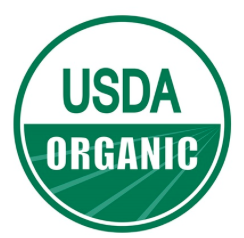
This means that the product has been tested and deemed fit by the right regulatory bodies. This means a lot if you live in the United States. Any extra assurance you can get in terms of quality is worth a few points – remember, sometimes there can be very little separating two top quality competitors, and a third party verification can go a long way!
Versatility
This usually applies if you are going for hibiscus tea in leaf form. Your leaves must not be made specifically for brewing tea. You should be able to use its extract for other things such as shampoo and homemade soaps.
While we suspect that you will, in fact, use the hibiscus leaves to make hibiscus tea, this versatility gives you some real value for your money! Some HTH readers tell us that they used the left over leaves as deodorizers in their homes! Talk about creativity!

These three features should help you make the right choice – but what if you want to skip the whole “research” part and just jump straight to drinking one of the top notch brands? Now, let’s look at some of my recommended hibiscus teas – I have been very pleased with them over the years, and I suspect that you will be as well!
How to Make Hibiscus Tea – Buy the Best!

Like I said earlier, learning how to make hibiscus tea is easier when you get the right kind of hibiscus tea (in fact, you will only have a top quality end result when you start by using top quality ingredients). I believe that the offerings below are a GREAT fit for the WIDEST amount of HTH readers!
There are many things to love about this particular hibiscus offering. One of them is the resealable bag it comes with. Can you believe that this is the exception rather than the rule? This ensures that the leaves stay fresh for a longer period, giving you a better bang for your buck!
The leaves also come cut and sifted. This means that you have less work to do if you get them. Even better, the leaves are grown in the best organic farms in Egypt. They have a certain “exotic” taste to them – or maybe that’s just my imagination!

It’s contained in about 200 cups which is sheer quantity if you ask me. This is actually a really good amount. Enough to keep me from running out at an inconvenient time, but not too much that I can’t consume it all before the expiration date arrives!
The best part? You get your money back if you don’t like it! That’s incredible! Of course, I suspect that you will share my opinion that you are very satisfied and you won’t be availing yourself to the money back offering!
My Experience

I loved these particular hibiscus leaves for many reasons. The versatile nature really made me fall in love – it was almost like getting a two-for-one. I extracted the juice and added it to my homemade soaps. I can tell you that it was one of the best decisions I have made. Smells pretty good to!
The taste and aroma of the tea was also another highlight. It fueled and made my day instantly better. This is why I typically make the tea in very large batches and then keep it in the refrigerator to drink in the mornings! I think you’ll love this one! I know that I sure do!!
Here are some pros and cons from my experience. I like “pro” and “con” lists. I hope you don’t think they are too cheesy!
Pros
- USDA organic
- Great Quantity (and at an affordable price)
- No additives
- Versatile Nature (almost like a two-for-one)
- Hibiscus tea had a great taste (kind of “earth”, yet “smooth”)
Cons
- You should check for allergens before making a purchase.
Tangy and fruity. Those are the best ways to describe how this particular hibiscus tea tastes. Obviously this one is quite a bit different, in taste, than is the “earthy” tasting hibiscus from above.

This hibiscus tea’s manufacturer is known for its sustainable and health conscience practices. This means that there are no additives added to any part of the hibiscus – just like it should be! This has earned them the non-BMO verified symbol in addition to being certified by the USDA organic.
This product comes in 6 packs. Each pack holds about 16 tea bags bringing the total to about 96. This is a good “middle of the road” value. Not too many, not too few!
My Experience

As I said, I found that it has a nice fruity taste. That’s pretty much expected from a manufacturer with a really good track record.
I found it that it also helped fuel me with more energy for my days. Over time, I began to reach more and more for hibiscus tea in the mornings than I would coffee. This is a BIG change for me, but it seems to have made an improvement my energy levels. So if that’s one thing you are looking for, this is your product.
Here’s a list of the pros and cons you should expect from this product.
Pros
- Non-BMO verified (health appropriate)
- USDA organic
- Great quantity
- Good for your energy levels
- Nice fruity taste (better for “new” hibiscus drinkers)
Cons
- Best to check for allergens before use.
Final Thoughts

So here you have it. We believe you now know how to make hibiscus tea as well as how to get the right product. Remember, the main take away is that you need to start with top quality hibiscus to make top quality hibiscus tea! This article has certainly taught you EVERYTHING you need to know to be able to pull that off! Armed with such knowledge, we’re confident it’ll be a walk in the park!!
Comments

So what did you think? Did you know how to make hibiscus tea before you read this article? How did your efforts turn out? Did you enjoy working with our recipe or perhaps you have tried out a different one and want to share your findings with the group? Please share your thoughts and opinions with us by posting on the Comments board below. We read and reply to every comment and absolutely LOVE interacting with the herbal tea community!
